39 how to calculate unsaturated fat on food label
Reading Food Labels (for Parents) - Nemours KidsHealth Saturated fats should account for less than 10% of the calories that kids eat each day. Trans fat should be as low as possible (less than 1% of total calories). Unsaturated Fat Unsaturated fats may also be listed under total fat. Unsaturated fats are often called "good fats" because they don't raise cholesterol levels as saturated fats do. How to Calculate Calories From Saturated Fats | livestrong Step 2. Multiply the number of grams of saturated fat by nine, because there are nine calories in every gram of fat. By contrast, there are four calories in every gram of protein and carbohydrate. Advertisement.
How to Understand and Use the Nutrition Facts Label | FDA That is two times the calories and nutrients shown in the sample label, so you would need to double the nutrient and calorie amounts, as well as the %DVs, to see what you are getting in two...

How to calculate unsaturated fat on food label
Interactive Nutrition Facts Label - Food and Drug Administration Download the Total Fat Fact Sheet. (PDF: 211 KB) Nutrition Facts 4 servings per container Serving size 1 1/2 cup (208g) Amount Per Serving 240 Calories % Daily Value* 5% Total Fat 4g 8% Saturated... What Are the Fats Not Listed on Nutrition Labels? - SF Gate You can't determine the amount of monounsaturated versus polyunsaturated fat from the food label, but you can calculate total unsaturated fats by subtracting the amount of saturated fat, trans fat... Food labels - NHS choose unsaturated oils and spreads, and eat them in small amounts drink plenty of fluids - the government recommends 6 to 8 cups or glasses a day If you're having foods and drinks that are high in fat, salt and sugar, have these less often and in small amounts. Try to choose a variety of different foods from the 4 main food groups.
How to calculate unsaturated fat on food label. Unsaturated Fat: What it is & Examples [Comprehensive Guide] Peanuts and sugar-free peanut butter. Some examples of zero-carb fats/oils rich in monounsaturated fats (with >50% of fat coming from MUFAs) are: High-oleic safflower and sunflower oils (best source of oleic acid) Extra virgin olive oil (best for high-heat cooking) Avocado oil. Macadamia nut oil. Goose fat. Reading and Understanding Food Labels and Nutrition Info - Beaumont Health Many fresh meats, poultry and fish do not have a nutrition facts label. The average cholesterol per ounce of an animal product is 25 mg. Percent of calories from fat Divide the calories from fat by the total calories. Keep in mind not every food you eat needs to contain less than 30 percent of the calories from fat. Food Labels: Fat & Cholesterol | Home & Garden Information Center The label does the math for you, putting all the numbers on the same scale of 0-100% DV for the day. These percentages are based on a 2,000-calorie daily diet, which is average for someone who is moderately active. Your daily values may be higher or lower depending on your calorie needs. The % DV column does not add up vertically to 100%. This Is How to Read a Nutrition Facts Label on the Keto Diet That's not a 33% fat, 33% carb, 33% protein ratio. It's actually 52% fat, 24% carb, 24% protein. This may sound a little confusing, but as long as you limit carbs (the most important part) and aim for healthy fats and protein to make up a majority of your daily macronutrient intake, your results should be excellent.
How to Calculate the Fat Percentage in Daily Food Intake In the same example in which you've eaten 2,000 calories, 50 grams of which were fat, say that 10 of those 50 grams were saturated. Multiply 10 by 9 -- the calories in a gram of any type of fat -- to get 90. Divide 90 by 2,000 to total 0.045 -- or about 4 1/2 percent of daily calories from saturated fat. This intake represents a healthy level. 3 Ways to Read Nutrition Facts on Food Labels - wikiHow 2. Eat less than 100% of your daily value in fat every day. Keep your fat intake under 100% of the recommended value. 65% is a healthy number to shoot for, but you may want to consume a little more if you're low on energy or trying to build muscle mass. Interactive Nutrition Facts Label - Food and Drug Administration Calories % Daily Value* 5% Total Fat 4g 8% Saturated Fat 1.5g Trans Fat 0g Polyunsaturated Fat 1.5g Monounsaturated Fat 1g 2% Cholesterol 5mg 19% Sodium 430mg 17% Total Carbohydrate 46g 25% Dietary... How Do You Calculate Unsaturated Fat On Food Labels? Not all food labels list unsaturated fat. You can subtract the saturated and trans fat grams from the total fat grams to see how much fat is healthy (unsaturated) fat. Where is unsaturated fat found in food? Unsaturated fats are predominantly found in foods from plants, such as vegetable oils, nuts, and seeds.
PDF Nutrition Facts Labels - University of Utah Health • Total fat is just what it says—all the fat in this food. • Saturated fat and trans fat are listed separately. You want to limit the amount of saturated fat you eat. You need to avoid trans fats. • To calculate unsaturated fat, subtract the grams of saturated fat and trans fat from the grams of total fat. •and limit saturated fat. Small Entity Compliance Guide: Trans Fatty Acids in Nutrition Labeling ... Trans fat content must be expressed as grams per serving to the nearest 0.5-gram increment below 5 grams and to the nearest gram above 5 grams. If a serving contains less than 0.5 gram, the... Where is unsaturated fat on a food label? Explained by FAQ Blog Multiply the grams of saturated fat by 9 = (xx) the number of saturated fat calories in the food item. b. Divide (xx) the number of saturated fat calories in the food item by the total number of calories in the food item = % of saturated fat. 1) Fat - 3 x 9 = 27 fat calories; 27/90 = 30% total fat. How Can I Calculate Calories From Fat? - Connecticut Children's For example, if a 300-calorie food has 60 calories from fat, divide 60 by 300 and then multiply by 100. That food has 20% of its calories from fat (60÷300=0.2 / 0.2×100=20). Most kids and teens should get 25% to 35% of total calories each day from fat. Toddlers ages 1 to 3 should get 30% to 40% of total calories from fat.
How to Find the Percentage of Total Fat by Gram Weight on a Food Label Start With the Label Take a look at the nutrition facts label. It'll tell you how many grams of fat are present in one serving, and will usually break that amount down into separate quantities for...
Do Saturated Fats & Unsaturated Fats Equal Total Fats on Nutrition Labels? So, if a serving of your favorite cookies has 0.49g of transfat, saturated fat or unsaturated fat - just 0.01g away from the 0.5g threshold - the manufacturer can label it as containing 0g of that...
PDF How to calculate Fat, Saturated Fat and Sugar content Divide (x) the number of fat calories by the total number of calories in the food item = % fat content. * 1 gram of fat contains 9 calories (kcal) 2) Saturated Fat: a.
» How to Calculate Calories from Fat - healthzene.com Calculate the calories from fats. Multiply the fat grams (found in nutrition labels) by nine (9). Each gram of fat yields 9 calories, which means multiplying the total fat by 9 results in the total calories given by the certain grams of fat. A great deal of calories comes from fat, with carbohydrates and protein only yielding 4 calories per gram.
How to Read Nutrition Facts Label - Food Network Bottom line: When looking at the fat breakdown of the food, aim for those with no trans fat, a minimal amount of saturated fat, and more mono- and poly-unsaturated fats to promote heart health. Sodium
How to Read the Nutrition Facts Label on Packaged Foods Most of it is in packaged foods and restaurant items. Limit salt to 2,300 milligrams (about 1 teaspoon) daily. If you have high blood pressure, kidney disease, or diabetes, or are African-American...
Fat Content on Food Labels - Reading Between the Lines The Mayo Foundation continued, "Still, you may be able to tell if a product contains trans fat, even if it's not directly listed on the food label. Look for the words ' hydrogenated ' or 'partially hydrogenated' in the list of ingredients. These terms indicate that the product contains trans fat.
How to Read a Nutrition Facts Label | Everyday Health "The nutrition facts label can have 0 g listed next to trans fat, as long as the product has less than 0.5 g of trans fat per serving," says Goergen. "That goes for any of the nutrients ...
Understanding Food Nutrition Labels - American Heart Association Remember that the information shown in the label is based on a diet of 2,000 calories a day. You may need less or more than 2,000 calories depending upon your age, gender, activity level, and whether you're trying to lose, gain or maintain your weight. When the Nutrition Facts label says a food contains "0 g" of trans fat, but includes ...
Food labels - NHS choose unsaturated oils and spreads, and eat them in small amounts drink plenty of fluids - the government recommends 6 to 8 cups or glasses a day If you're having foods and drinks that are high in fat, salt and sugar, have these less often and in small amounts. Try to choose a variety of different foods from the 4 main food groups.
What Are the Fats Not Listed on Nutrition Labels? - SF Gate You can't determine the amount of monounsaturated versus polyunsaturated fat from the food label, but you can calculate total unsaturated fats by subtracting the amount of saturated fat, trans fat...
Interactive Nutrition Facts Label - Food and Drug Administration Download the Total Fat Fact Sheet. (PDF: 211 KB) Nutrition Facts 4 servings per container Serving size 1 1/2 cup (208g) Amount Per Serving 240 Calories % Daily Value* 5% Total Fat 4g 8% Saturated...


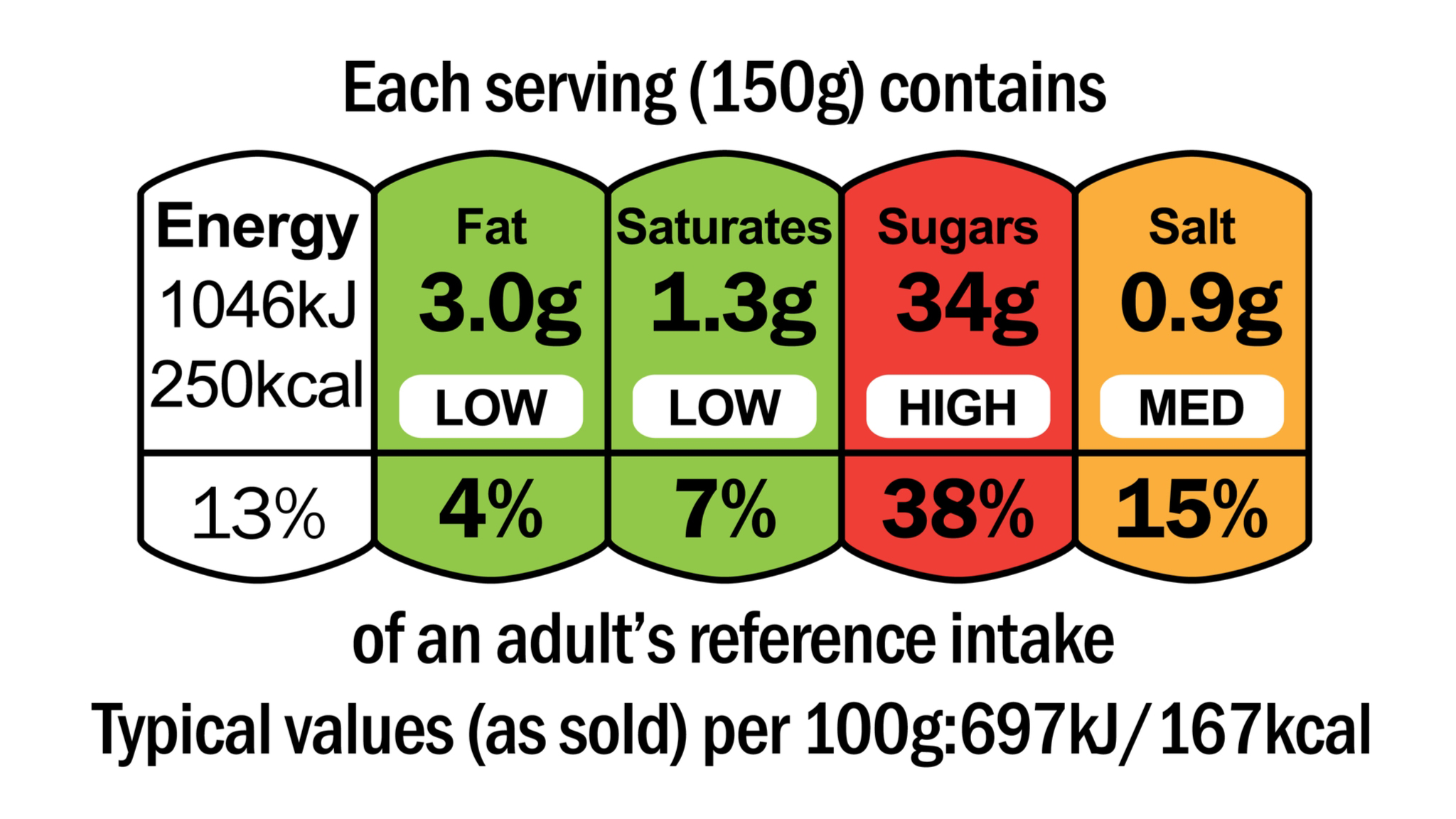




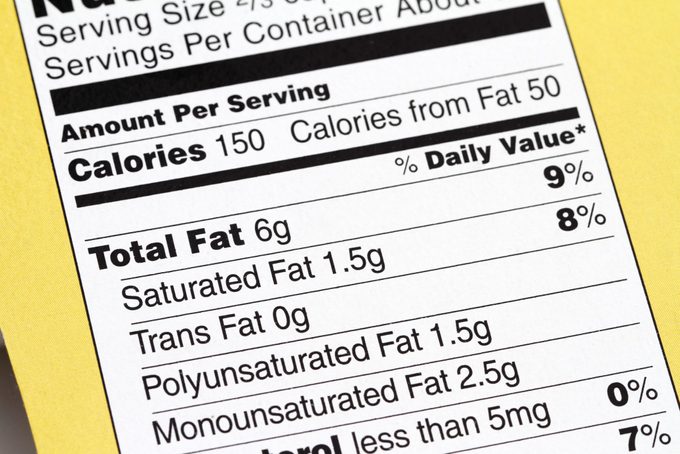


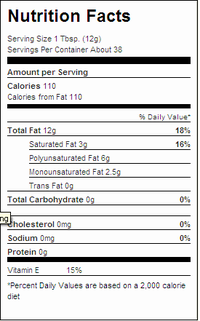
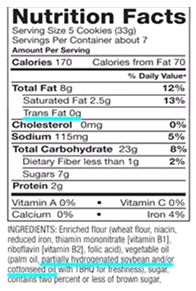
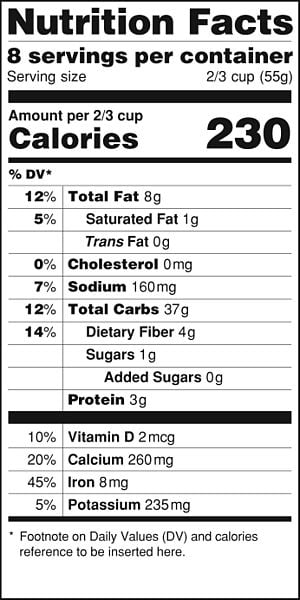
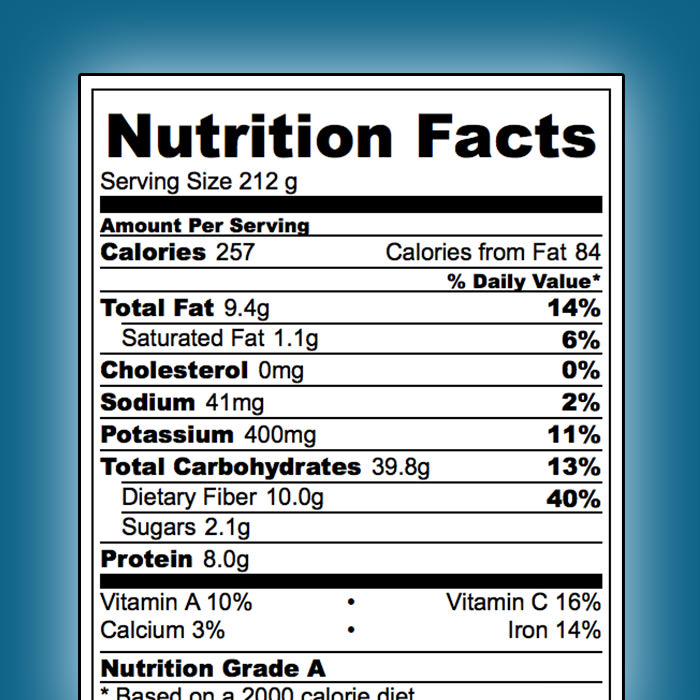

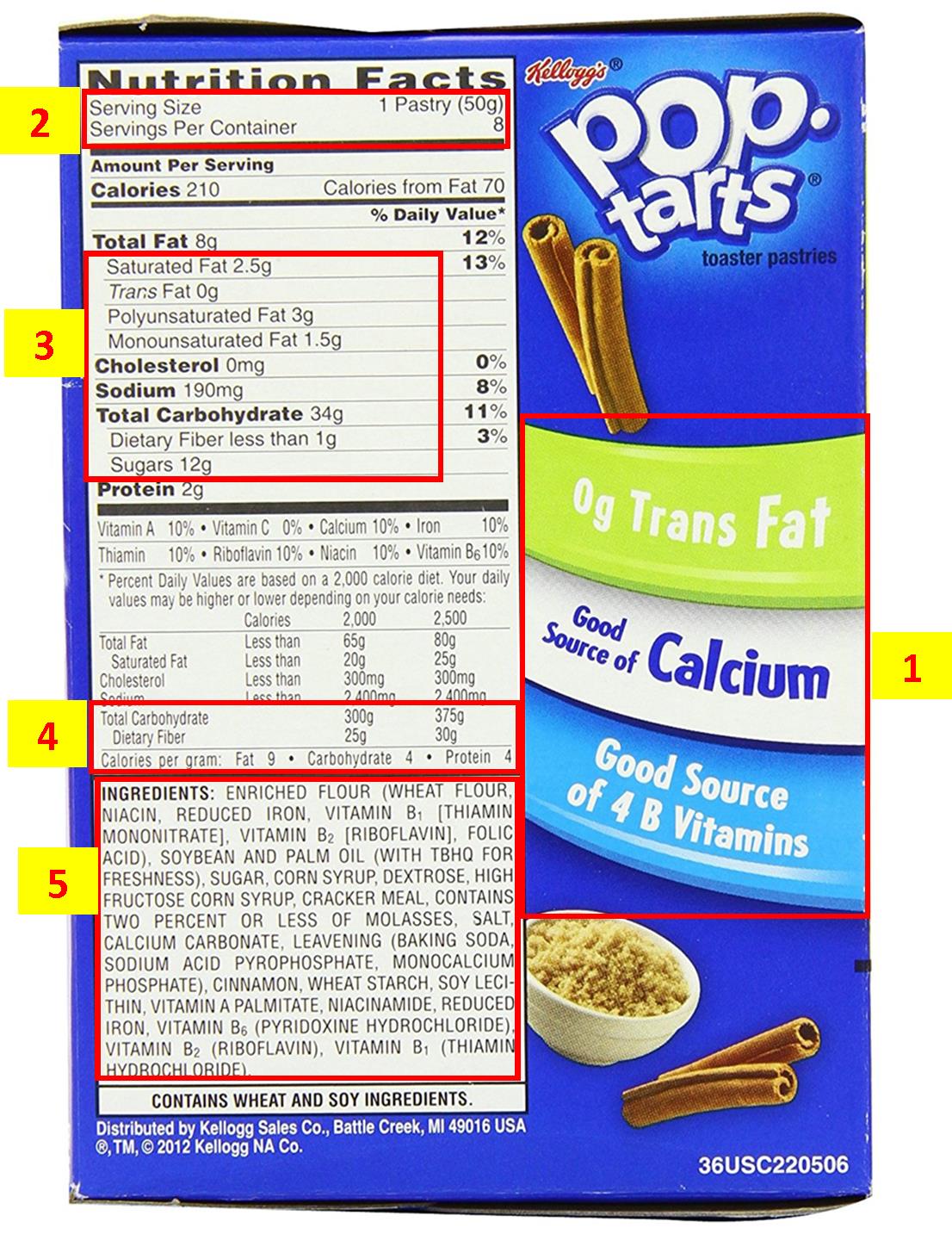
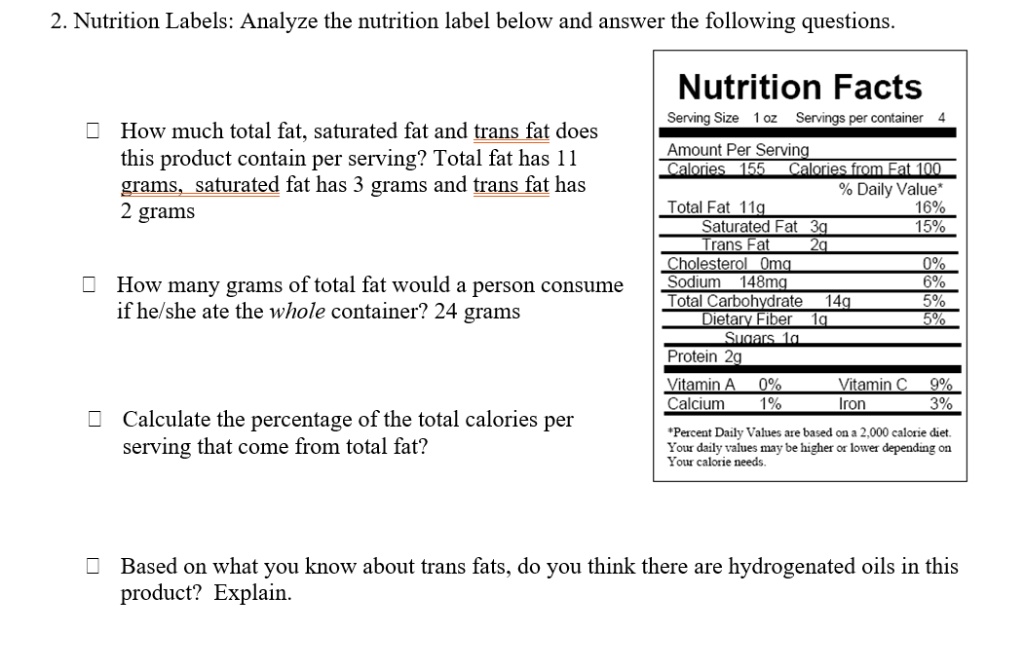
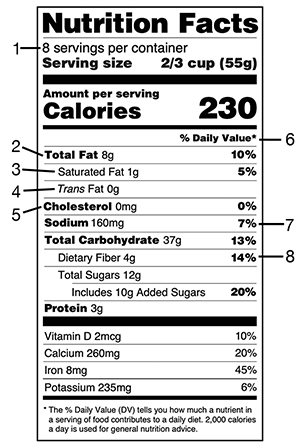
:max_bytes(150000):strip_icc()/Untitled-design-2--57535bc15f9b5892e8c65c9c.jpg)


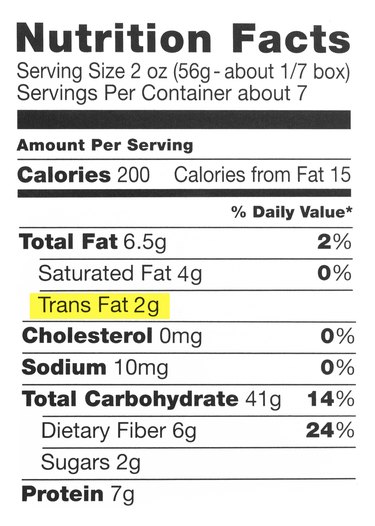
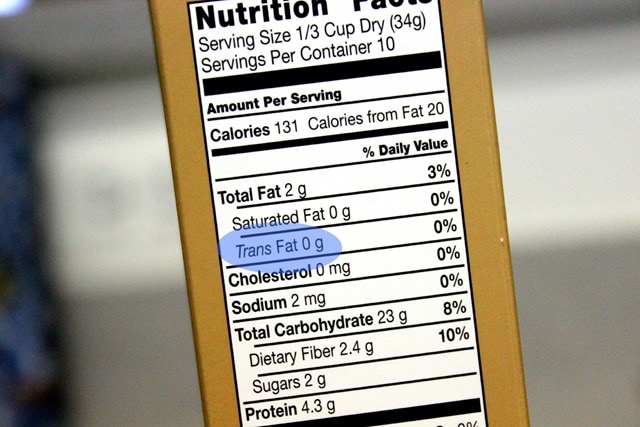
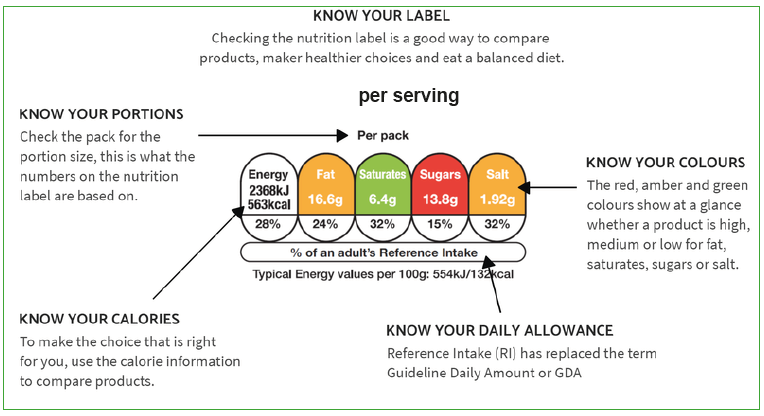







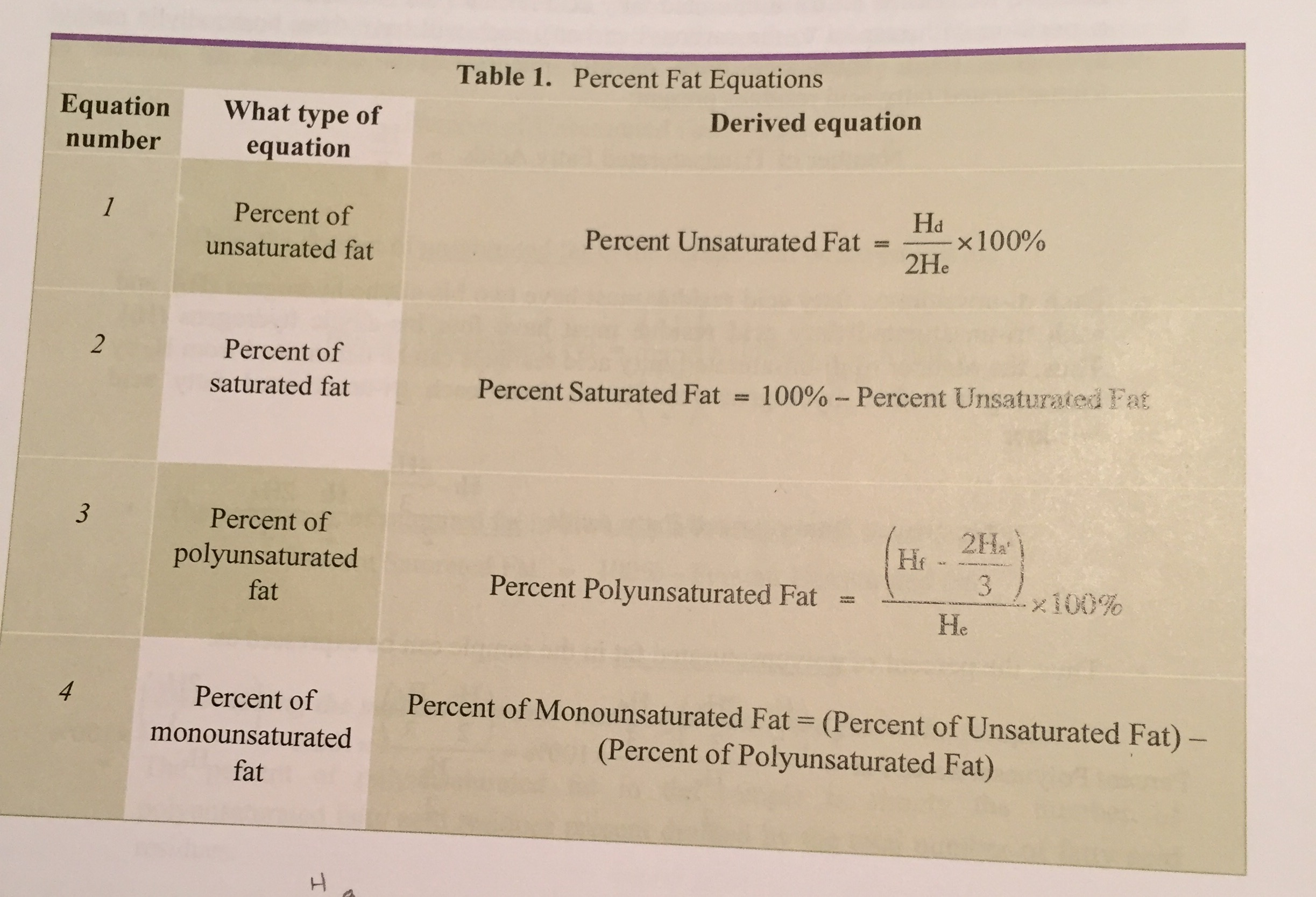
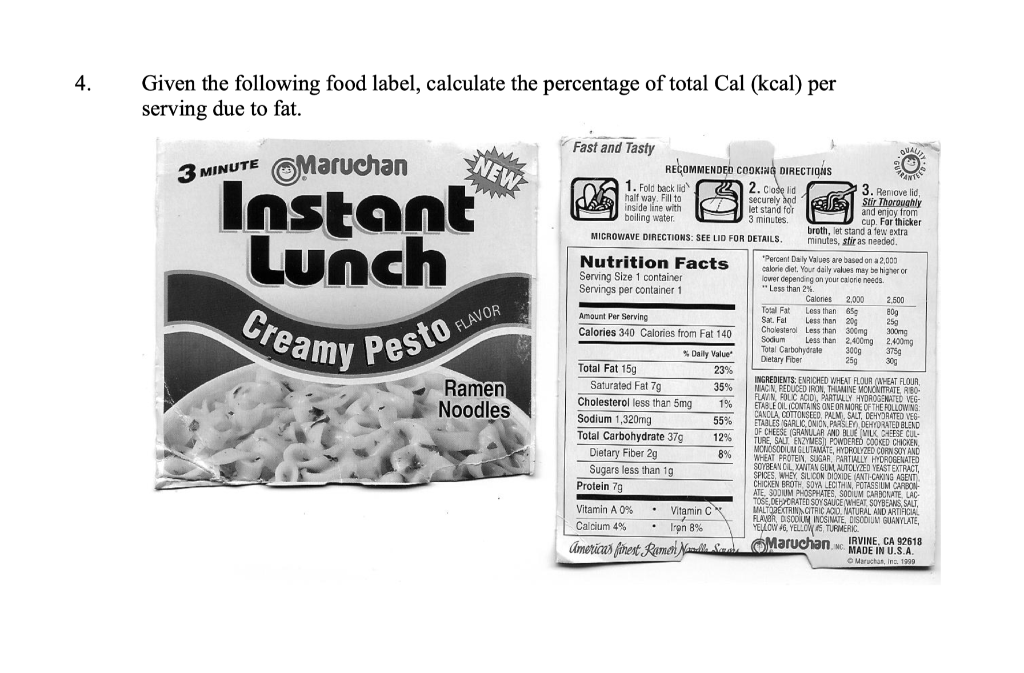
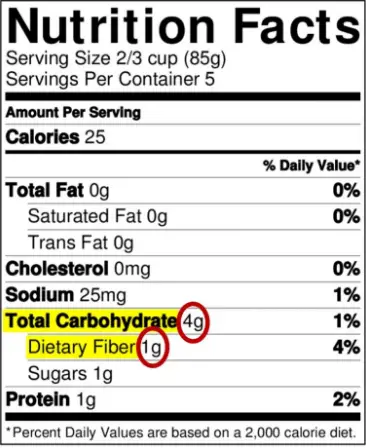
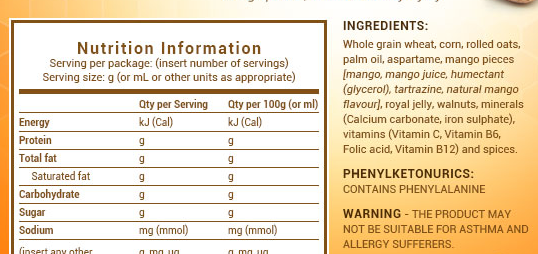

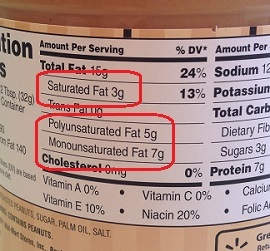
Post a Comment for "39 how to calculate unsaturated fat on food label"